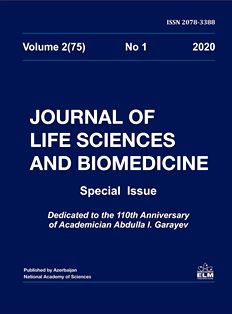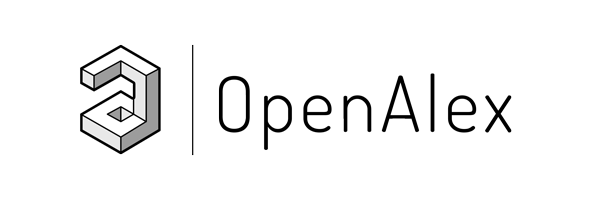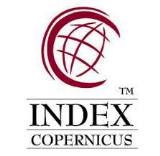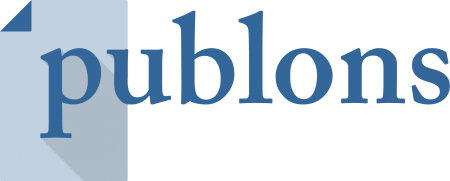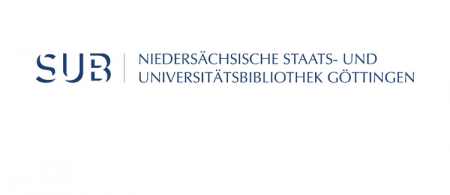
About the Journal
Journal of Life Sciences and Biomedicine
Belongs to: Division of Biological and Medical Sciences of Azerbaijan National Academy of Sciences
ISSN Print: 2710-4915
ISSN Online: 2710-3447
Editor-in-Chief:
Ahliman T. Amiraslanov, Academician, Doctor of Medical Sciences, Professor
Associate Editor:
Irada M. Huseynova, Academician, Doctor of Biological Sciences, Professor
Title: Journal of Life Sciences & Biomedicine
Abbreviated Key Title: J. life sci. biomed. (Baku)
Parallel Titles:
Azerbaijani: Həyat elmləri və biotibb jurnalı
Russian: Журнал наук о жизни и биомедицины
Publisher:
Baku: Division of Biological and Medical Sciences, Azerbaijan National Academy of Sciences
Publication Frequency: Semiannual
Language: English
About the Journal
The Journal of Life Sciences and Biomedicine (JLSB) is a foundational scientific journal published in Azerbaijan, dedicated to addressing urgent and contemporary issues in biology and medicine. It publishes original research and reviews across a wide range of disciplines including:
Biochemistry
Molecular Biology
Genetics
Bioinformatics
Physiology (human, plant, and animal)
Zoology
Botany
Plant reserve experience and introduction
Clinical medicine and practice
The journal accepts diverse formats, such as rapid communications, research articles, review articles, article-commentaries, and meeting reports.
The journal maintains an official website: www.jlsbjournal.az.
Historical ISSN Numbers
Former ISSN: 2078-3388 (Baku, 1990–2019)
Old ISSN: 0132-6112 (Baku: "ELM", 1964–1989)
Oldest Print ISSN: 0002-3086 — Azärbajǧan SSR Elmlär Akademijasynyn häbärläri / Bioloķija elmläri Serijasy
Oldest Electronic ISSN: 0002-3558 — Azärbajǧan SSR Elmlär Akademijasynyn häbärläri Bioloķija elmläri serijasy = Serija biologičeskich nauk
Privacy Statement
This journal collects standard information from registered users only, such as email address, affiliation, researcher ID, ORCID iD, and mailing address. This information facilitates communication during the editorial process and enables the collection of aggregated data on submissions and publications. All collected data remain confidential, will not be shared with third parties or used for any purposes outside the journal’s editorial workflow. Anonymity of authors and reviewers is maintained throughout the process.
Authors publishing in this journal are responsible for ensuring that any human subject data (including population or medical data) reported in their studies complies with ethical standards and relevant regulations.
Plagiarism Policy
The journal publishes only original research that has not been published elsewhere. Manuscripts submitted must have a plagiarism level below 25%. When checking for plagiarism, properly cited text and references are excluded, as well as common phrases typically used in describing methods and materials.
Publication Ethics
To maintain integrity and objectivity, every manuscript approved by the editorial board undergoes evaluation by at least two independent, expert reviewers in the relevant field. The journal follows a double-blind peer review process, where authors and reviewers remain anonymous to each other.
The journal’s publication ethics adhere to the standards and best practices recommended by Elsevier and the Committee on Publication Ethics (COPE). All parties—Authors, Editors, Reviewers, and the Publisher—are expected to uphold these ethical standards.
Roles and Responsibilities
Editors
Conduct initial manuscript screening for originality using plagiarism detection software.
Maintain confidentiality of submitted manuscripts.
Manage the peer review process and base decisions on reviewers’ recommendations.
Do not use unpublished material from manuscripts without written author consent.
Authors
Submit original work and provide an accurate and objective account of their research.
Ensure manuscripts are not under consideration by any other journal simultaneously.
Properly cite all sources and acknowledge contributions of co-authors.
Provide raw data for editorial review if requested and retain such data.
Promptly notify the editor of any errors or inaccuracies discovered post-submission.
Reviewers
Maintain confidentiality of manuscripts and treat them as privileged information.
Ensure proper citation of all sources and disclose any overlap with other work.
Complete reviews objectively and promptly; inform editors if unable to meet deadlines.
Follow COPE Ethical Guidelines for Peer Reviewers:
COPE Guidelines
Open Access Policy
All research articles published in the Journal of Life Sciences and Biomedicine (JLSB) are fully open access, freely available for reading, downloading, and sharing immediately upon publication. Articles are published under a Creative Commons license permitting use, distribution, and reproduction in any medium, provided the original authors are properly credited.
Authors and copyright holders grant the journal full access rights to publish and disseminate their work under these terms.
Article Processing Charges
There is no publication fee for authors. All articles are published in full open access without any charges.
Copyright Transfer Statement
Upon acceptance, authors will be asked to complete a Copyright Transfer Agreement to formalize publication rights. For details, see: [Copyright Transfer Statement.pdf]
Scientific Subject Classification
For detailed subject classifications of articles accepted, see: [Scientific_Subject_Classification.pdf]
Peer Review Process
Peer review is a critical process used to assess the quality, originality, validity, and significance of submitted manuscripts by independent experts before publication.
How it works:
Upon submission, manuscripts are first checked for compliance with journal requirements.
Eligible manuscripts are assigned to peer reviewers with expertise in the topic.
Reviewers evaluate and provide recommendations to the editors.
Types of Peer Review at JLSB:
Single-blind: Reviewers know authors’ identities; authors do not know reviewers unless signed.
Double-blind: Both authors’ and reviewers’ identities are concealed.
Open peer: Authors and reviewers know each other; reviews and responses may be published.
Transparent peer: Reviewers know authors; authors do not know reviewers unless reports are signed; anonymous reports may be published with author responses.
Different journals use different peer review models. JLSB mainly uses double-blind review but may specify otherwise.
Why peer review?
Improves manuscript robustness by identifying gaps or needed clarifications.
Enhances readability through constructive feedback.
Ensures research significance and contribution to the field.

